
One of the most famous Brussels houses was built by a native of Brtnice
BRUSSELS - Who does not know the Stoclet Palace in Brussels. Everyone knows it is that strange building on the prestigious Avenue Tervuren, quite different from everything around it, proud and aloof. Those familiar with it know the author, the Austrian architect Josef Hoffmann, a famous representative of Vienna Secession. However, few realize that the native of Brtnice near Jihlava comes from Czech lands, not Austrian.
The palace was built for the Belgian industrialist Adolphe Stoclet, who bet on a young and relatively unknown artist - after all, he was only 35 years old at the time, having completed barely a few villas and country houses; his strength then lay in the decoration of interiors. In Brussels from 1905, he perfectly applied the approach of the Wiener Werkstätte, an artistic incubator and workshop to which he belonged since 1903. The palace was conceived and constructed as a comprehensive work of art - from the doorknob to the layout of the garden. And it remains so to this day.
Architects from around the world recognize this gem, one of the most famous examples of early 20th-century art, a blend of Art Nouveau and monumentalism, which fascinates with its decisive modernity, but also with boundless decorativeness. Stacks of paper have been written about the combination of brass decorations and white marble, the proportional balance of the building, and the monumental figures from the studio of sculptor Metzner that crown the tower above the central staircase. The famous Viennese painter Gustav Klimt also contributed to the interiors. That is why the Belgian government recently decided to request the inclusion of the palace on the UNESCO World Heritage list.
Hoffmann was born in Brtnice in December 1870 and graduated from the high school in Jihlava. He spoke German, but according to a biography published by the local friends' society, he also knew Czech. Buildings from his workshop also grew not only in Austria but also in Kladno, Olomouc, Bruntál, and Vrbno pod Pradědem. He died in Vienna in 1956.
Stoclet's daughters, who now live in the palace, agree to its future accessibility to the public and transformation into a cultural institution; however, it is still unclear what that should entail. In the meantime, they at least took a trip to Brtnice to see their father's birthplace. There is nothing there that would suggest even remotely the inspiration for this masterpiece, which rules over Avenue Tervuren while disdainfully departing from it, challenging the contest of beauty and simultaneously throwing in a towel in endless pride. A strange, remarkable house; a strange, remarkable Hoffmann.
The palace was built for the Belgian industrialist Adolphe Stoclet, who bet on a young and relatively unknown artist - after all, he was only 35 years old at the time, having completed barely a few villas and country houses; his strength then lay in the decoration of interiors. In Brussels from 1905, he perfectly applied the approach of the Wiener Werkstätte, an artistic incubator and workshop to which he belonged since 1903. The palace was conceived and constructed as a comprehensive work of art - from the doorknob to the layout of the garden. And it remains so to this day.
Architects from around the world recognize this gem, one of the most famous examples of early 20th-century art, a blend of Art Nouveau and monumentalism, which fascinates with its decisive modernity, but also with boundless decorativeness. Stacks of paper have been written about the combination of brass decorations and white marble, the proportional balance of the building, and the monumental figures from the studio of sculptor Metzner that crown the tower above the central staircase. The famous Viennese painter Gustav Klimt also contributed to the interiors. That is why the Belgian government recently decided to request the inclusion of the palace on the UNESCO World Heritage list.
Hoffmann was born in Brtnice in December 1870 and graduated from the high school in Jihlava. He spoke German, but according to a biography published by the local friends' society, he also knew Czech. Buildings from his workshop also grew not only in Austria but also in Kladno, Olomouc, Bruntál, and Vrbno pod Pradědem. He died in Vienna in 1956.
Stoclet's daughters, who now live in the palace, agree to its future accessibility to the public and transformation into a cultural institution; however, it is still unclear what that should entail. In the meantime, they at least took a trip to Brtnice to see their father's birthplace. There is nothing there that would suggest even remotely the inspiration for this masterpiece, which rules over Avenue Tervuren while disdainfully departing from it, challenging the contest of beauty and simultaneously throwing in a towel in endless pride. A strange, remarkable house; a strange, remarkable Hoffmann.
The English translation is powered by AI tool. Switch to Czech to view the original text source.
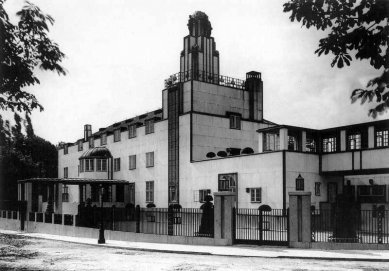

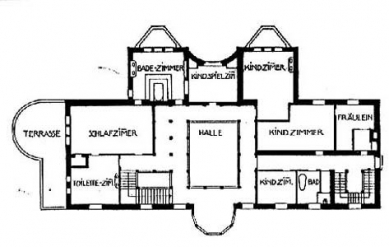
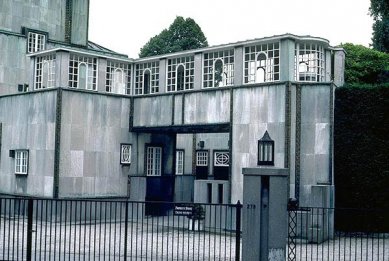
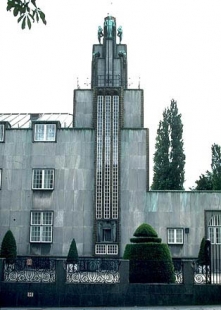
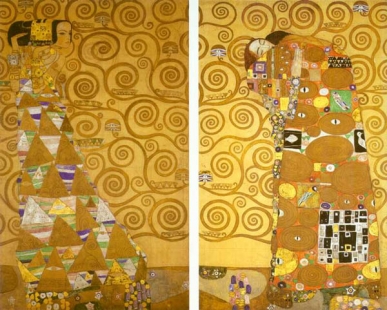
1 comment
add comment
Subject
Author
Date
Opravte si prosím...
Josef Novák
27.03.13 11:18
show all comments
Related articles
0
25.08.2022 | At the castle in Brtnice, archaeologists are working, their findings will help with the restoration of the castle
0
26.04.2018 | In the Skin of Dušan Jurkovič - Introspection by A1 architects
0
09.10.2016 | The church tower in Brtnice now has its dome back, covered with copper after the renovation










